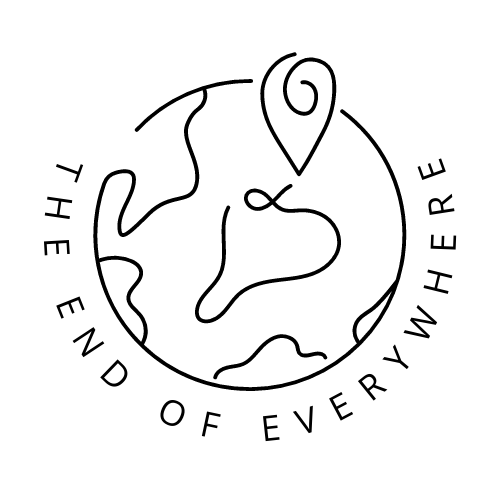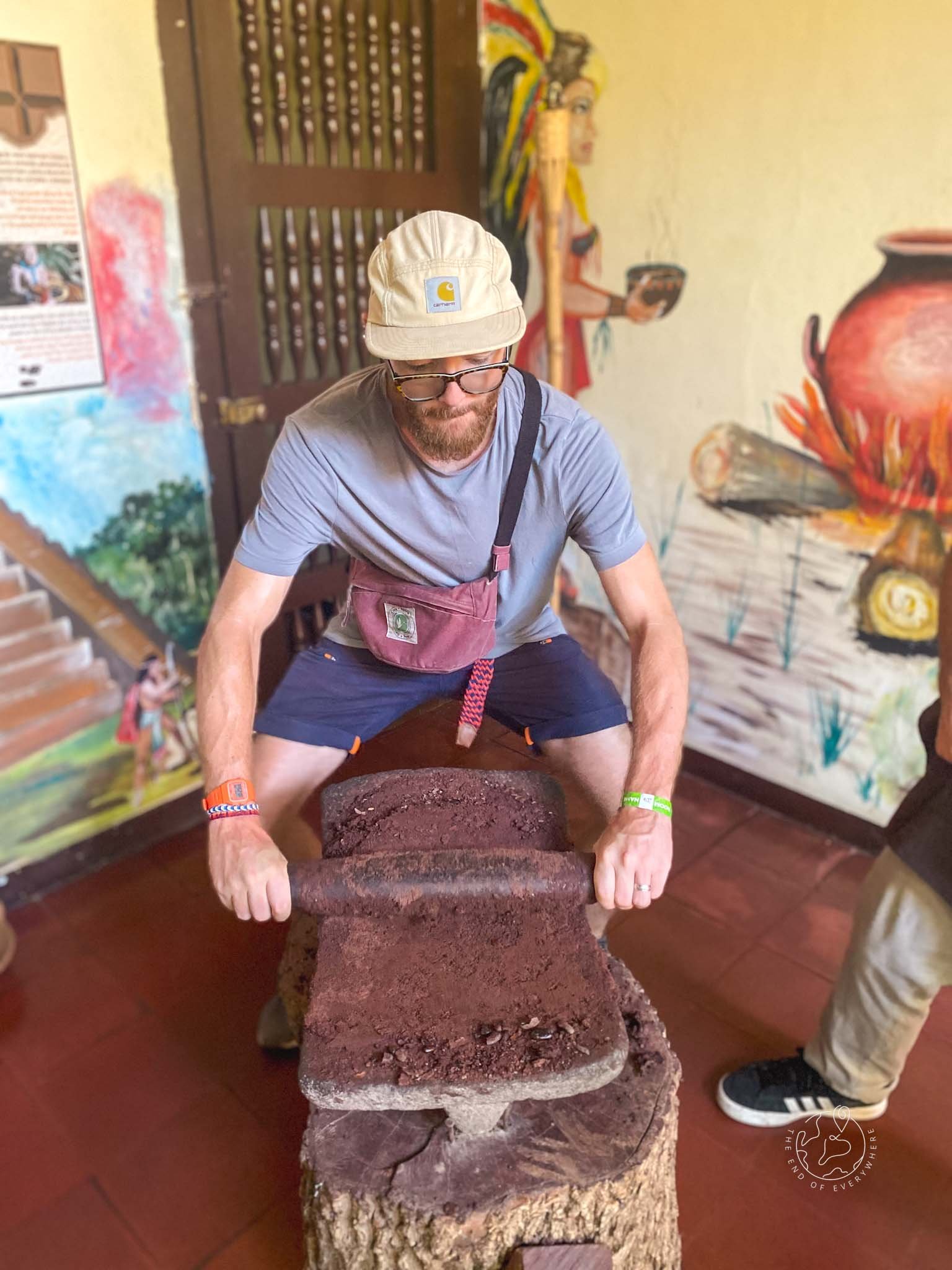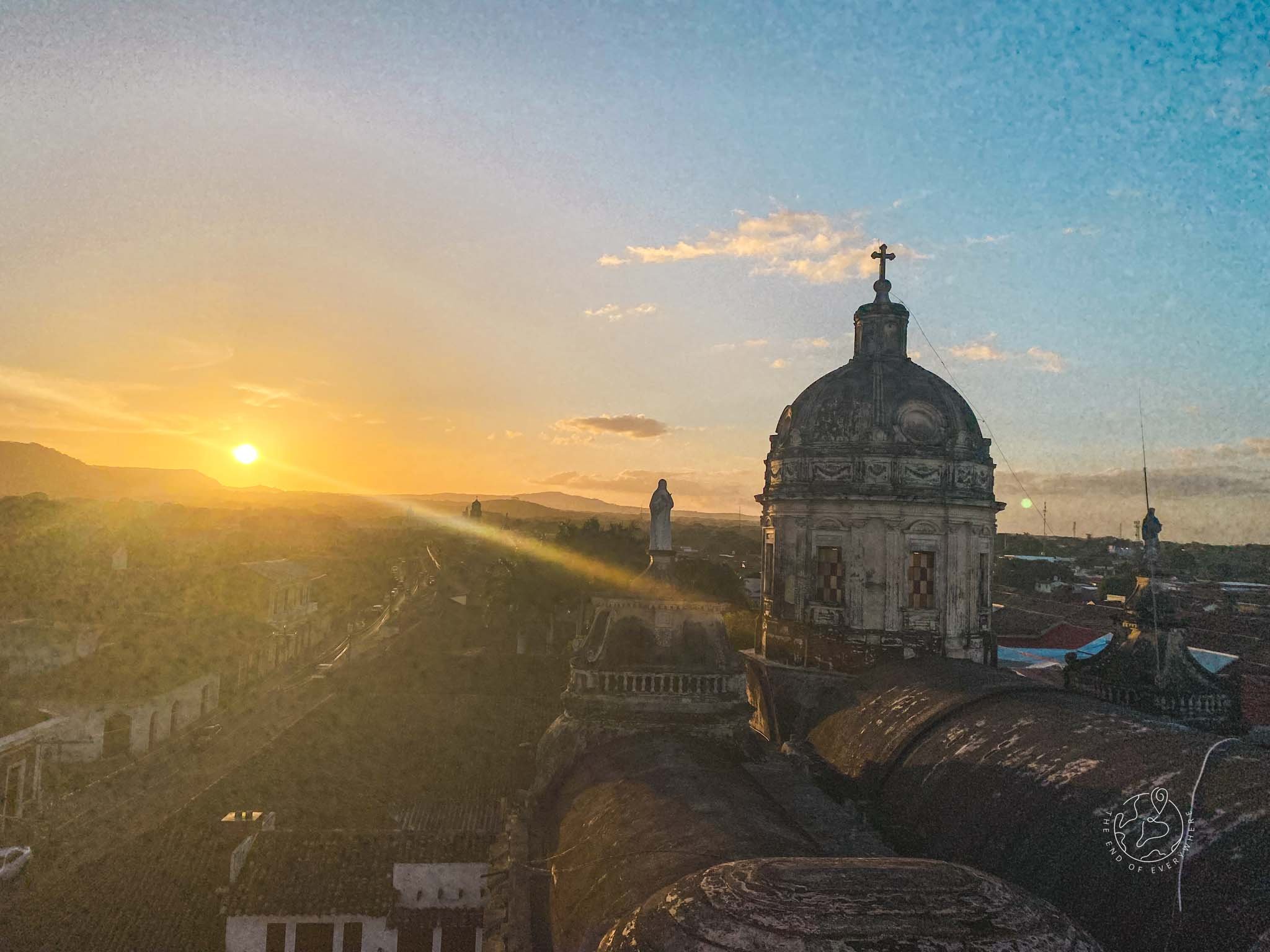Colourful Granada and Historic Leon, Nicaragua
The sunset over Granada from the tower of the Church of the Mercy.
Our journey off Ometepe wasn’t nearly as dramatic as the one to get there, but it did treat us to one parting gift of worry.
The two days before our departure, most ferries had been cancelled due to high winds, leaving people stranded on the island. So we got up earlier than we wanted to in order to be at the port, prepped for a long wait… but managed to get straight onto a boat. Phew!
From Rivas it was a direct chicken bus to Granada - our next stop and Jay’s final few days with us.
After arriving in the city we went straight up to the tower of the Church of the Mercy to watch a stunning sunset over the city’s colourful buildings. We followed this with a memorable Middle Eastern dinner at a restaurant called Pita Pita - the food was incredible! It was a beautiful introduction to our home for the next few nights.
Lazing at the Laguna
The next day we actually went straight out of Granada to take in two of the most popular nearby attractions. First we went to Laguna Apoyo - a lake that has formed in the crater of an extinct volcano.
“Beach clubs” and hotels have popped up around the lake shore, making a luxurious escape from the heat of the city. We pulled up deck chairs and ordered fruit smoothies with shots of rum as we relaxed under palm trees. It wasn’t long before the warm and still lake waters coaxed us in. We swam out to a wooden platform and took in the jaw dropping surroundings… it was one of those moments where you think “is this really happening?!”
Mixed emotions at Masaya
After an afternoon at the lake we were picked up and taken to Masaya Volcano. This is a famous trip from the city as it promises the chance to see active lava within the volcano. Honestly? I don’t think it was worth it.
About 10 years ago the lava sat around 200m below the surface, so was clearly visible (I gather from the pictures that are used to sell the tour). Now, in 2024, it is more than 300m below the surface. There are only very specific points you can see the lava, and even then you need to be at the front and craning over the wall. If people get to the front before you, cross your fingers and hope they are nicer than the people there at the same time as us, who spent the whole 20 minutes at the front taking the same picture over and over again, refusing to let other people get a glance. Standing on tiptoe to watch a tiny bit of lava through someone else’s phone is not worth $25.
I am glad we went though, as before we were taken to “see” the lava we had a small walk over another crater ridge to watch the sunset and it was truly beautiful.
Gorgeous Granada
On Jay’s final day with us I put together a DIY walking tour of the city. Granada is genuinely a really beautiful place, and just walking around to see the colourful buildings and enjoy the relaxed vibe is a great way to spend the morning. We went to a cigar factory and got a demonstration of cigar making, we enjoyed a fun and non-traditional chocolate making demonstration at Bate Bate and we saw plenty of churches and beautiful buildings.
After saying goodbye to Jay, Graeme and I stayed in the city another two days simply to relax and do admin - work out our budget, do laundry etc. All the non-glamorous things you don’t associate with travelling!
Then we packed up and bussed a few hours further north to the city of Leon.
The City of Revolutions
We kept our slow pace as we have been really enjoying the “vibe” in Nicaragua, and as we reach the final few months of our travels we want to appreciate every place as much as we can.
Whilst in Leon, we made an effort to understand more about the history of Nicaragua. Which, even as two history graduates, was hard to get our heads around! I was very intrigued by Leon as it is known as the revolutionary city - a city that has played a huge role in the tumultuous history of Nicaragua.
We went to the Museum of the Revolution first, and to be honest were a little disappointed by the experience. The museum itself is a building that is quite literally crumbling, and the exhibits are pictures without further context. Entry includes a guide, so we thought we would leave with good understanding, but the opposite is true. You join in wherever the guide is in the tour when you arrive, so, for us, the story started half way through. The guide spoke English but he spoke so fast it was impossible to understand- it’s clear he was following a script and has it memorised. There was no time to absorb or comprehend or ask questions. And the timeline jumped all over the place - one moment we were talking about 1972 then 1956. I left more confused than when I arrived!
They also take you up to the rooftop for panoramic views of the city - the less said about that the better. We walked over rusty sheets of corrugated iron that looked like they could collapse any moment. Several had huge foot-shaped holes in them already. To escape without falling through the roof and without a rusty cut honestly seems like a miracle! I’ll admit the views were pretty good, though!
Still determined to talk to local people about their history, we booked a highly rated walking tour with a historical focus. Our guide, Leo, was amazing. He told us all about the history of the city through the main sights, gave multiple points of view including his own and answered every question enthusiastically. We even visited the local market and he suggested the group all add $1 to a kitty so we could all try some different local dishes - a food tour within the tour. It was great!
Being lucky enough to grow up in a country with stable democracy, it’s easy to romanticise the idea of revolution - people rising up for a better future. Learning about the history of Nicaragua put this into perspective. It’s a country that’s seen multiple revolutions but has rarely had long periods of peace and stability to allow the people to grasp that prosperous future that has been promised.
Leon has historically been a centre for intellectual and political activities, producing many prominent figures like poets, writers, artists and revolutionaries. That afternoon we walked around with Leo looking at the street art.
One in particular stuck with me: part of a larger mural, it showed two children wearing the colour of peace, running off into a future of unspoilt beauty and nature… a simple dream for the people of Nicaragua.
Related Content






























